A pitch deck can make a strong case for your business—if it’s well-executed.
In this guide, you’ll learn about the essential slides your presentation should include to impress investors. And get inspiration from seven pitch deck examples.
Let’s get started.
What Is a Pitch Deck?
A pitch deck is a presentation that founders use to explain their business model or idea to potential investors. And why investors should consider funding the venture.
A pitch deck alone won’t help you secure funding. Because acquiring financial support is a complex, multi-step process.
But a good pitch deck can spark enough interest among potential investors to earn you a follow-up meeting.
With that in mind, let’s go over what your pitch deck should include.
11 Essential Pitch Deck Presentation Slides
Here’s what goes into a pitch deck that wows investors:
1. Introduction
Your introduction slide should communicate what you do. And how your company solves a problem for your target audience.
This makes a memorable first impression. And sets the stage for the rest of your presentation.
For example, Careerist did this with one brief sentence: "We finance, train, and place job seekers in tech and beyond."
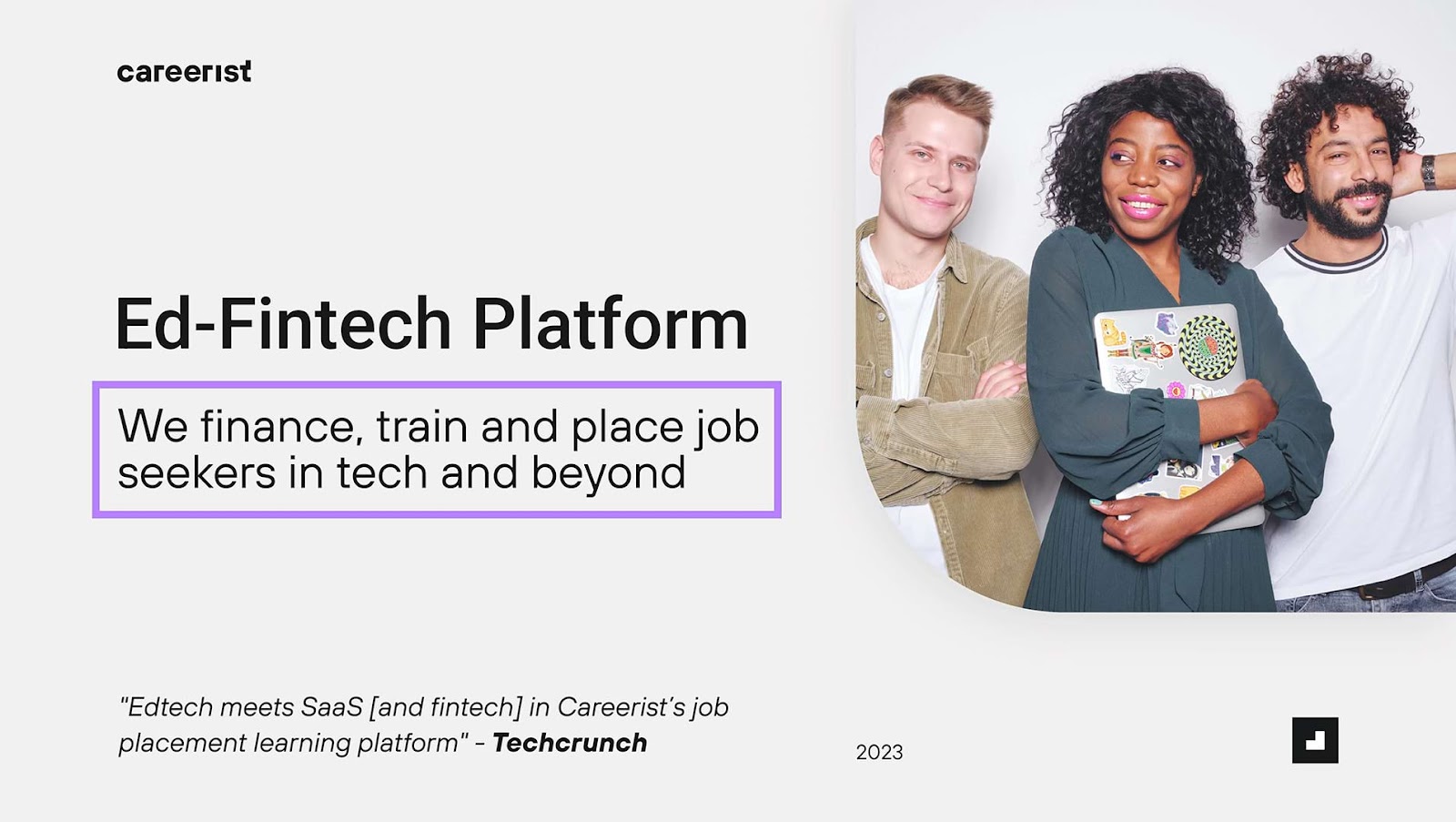
Need more inspiration? Check out these value proposition examples from other companies' pitch decks:
- Airbnb: "Book rooms with locals, rather than hotels."
- Softr: “No-code SaaS platform for SMEs to turn their data into custom apps.”
- Youreka: “Digital assistant for frontline workers.”
- Synder: “Easy accounting focused on ecommerce.”
2. Problem
Potential investors need to understand what your business solves to understand why you matter. Ideally, this means highlighting a gap in the market that you address.
Focus on two or three core problems. And keep the content clear and concise.
Cloud application hosting platform Render listed three core problems its product solves that others don’t.
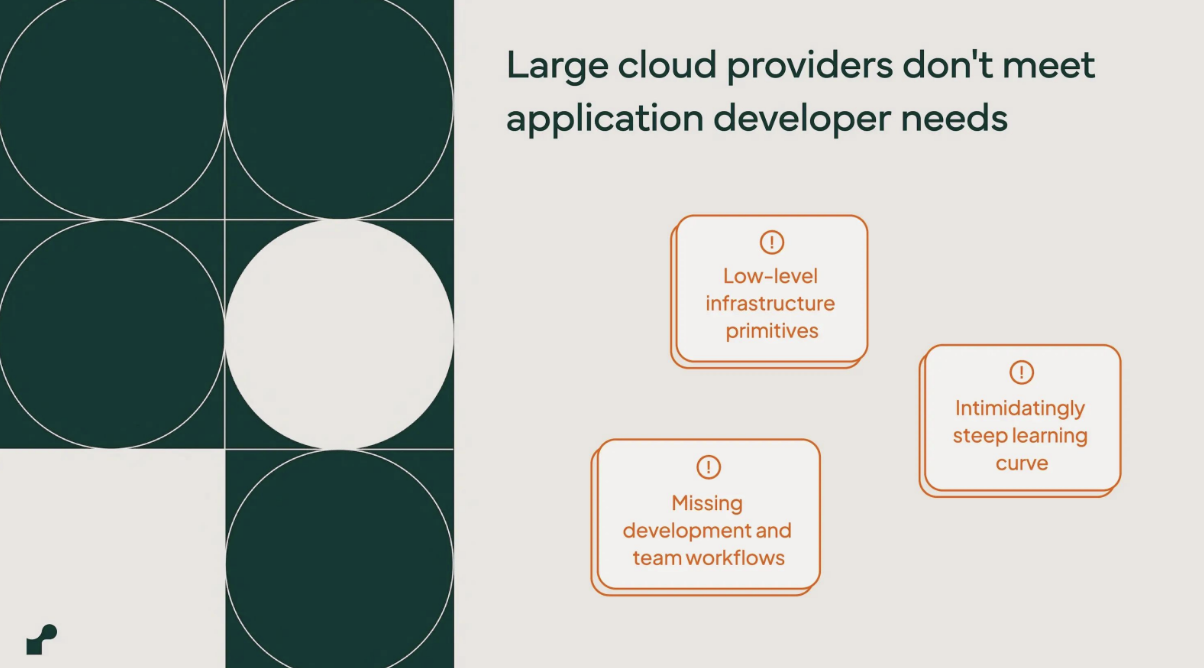
3. Solution
Instead of listing your features, highlight the benefits. Because focusing on how your solution helps your target market is much more impactful.
If possible, include evidence such as early test results, customer testimonials, or case studies.
Don’t overpromise. Realistically show what your product or service will deliver.
4. Market Validation
This slide is about proving there’s demand for your product or service. To increase your chances of being funded.
To do this, present concrete evidence that shows your target market would be willing to buy your offering. Which you can do with market studies, customer surveys, or sales data.
Apollo, a sales intelligence and engagement platform, used its past sales data to prove market validation in its pitch deck.

5. Market Size
It's also important to demonstrate your target market’s size. To show your idea has the potential for substantial revenue and growth.
Provide hard numbers on things like the overall market value and expected growth over time.
Use Semrush’s Market Explorer to research your target market’s size.
The tool can tell you how big your market is.
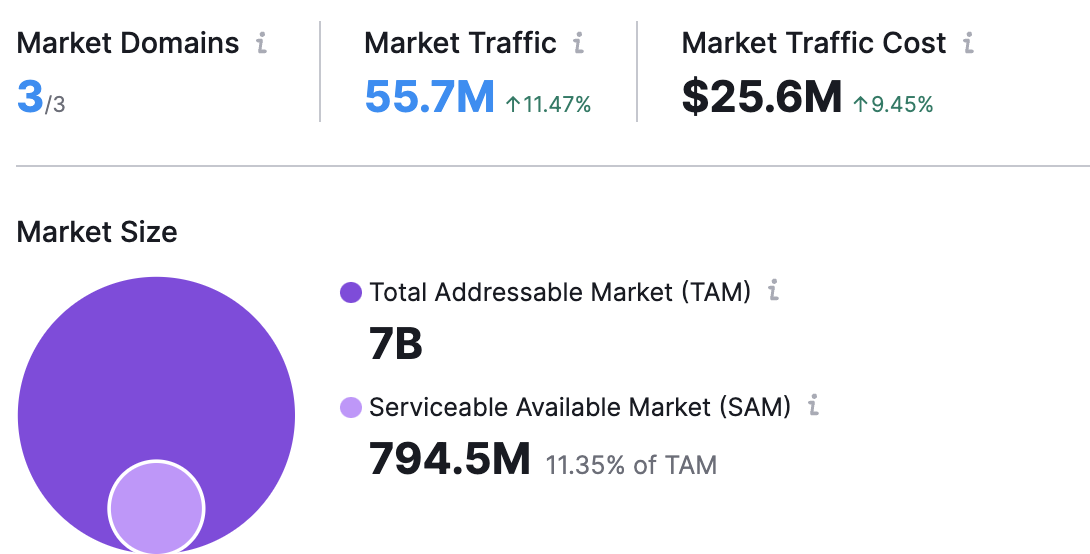
You’ll also see overall traffic trends.

And gain insights into your audience’s locations.


6. Product
Use this slide to show off your product or service. And what makes it special.
Include high-quality photos from multiple angles. And if possible, add a short video to help investors see your product or service in action.
For example, equity management company Pulley used screenshots to demonstrate its product interface and features in its pitch deck.
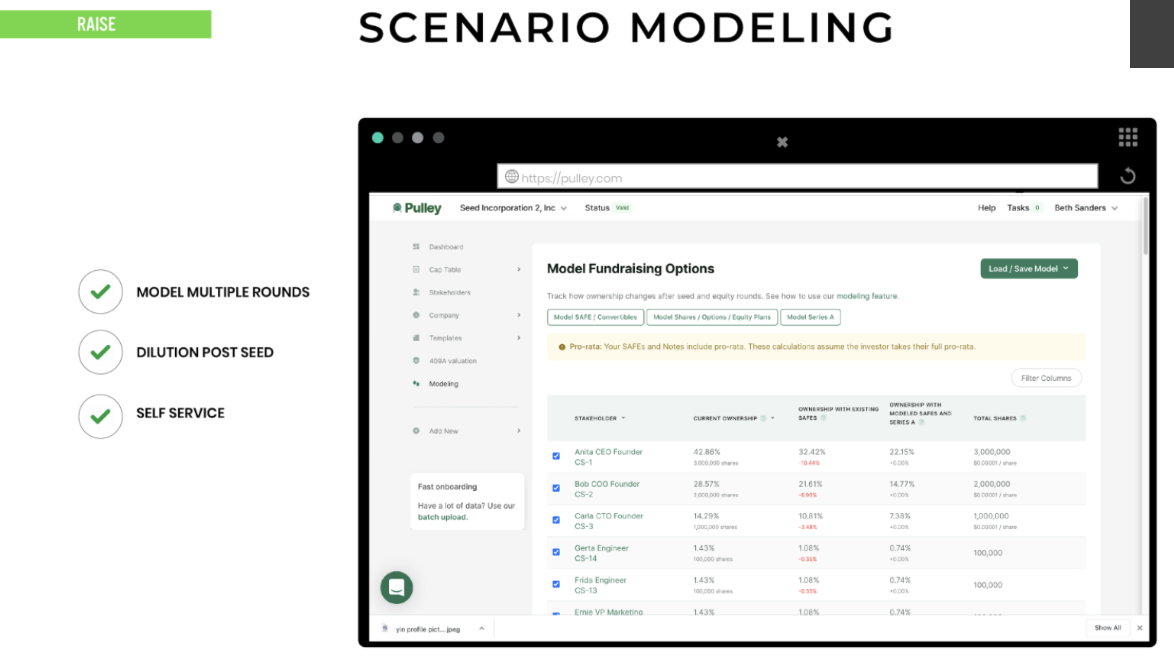
7. Business Model
Give investors a clear understanding of your business model, revenue streams, key partnerships, and how you plan to achieve profitability. So they can see that you have a clear path to success.
Product discovery and development platform Fibery provided a quick overview of its business model in its pitch deck.
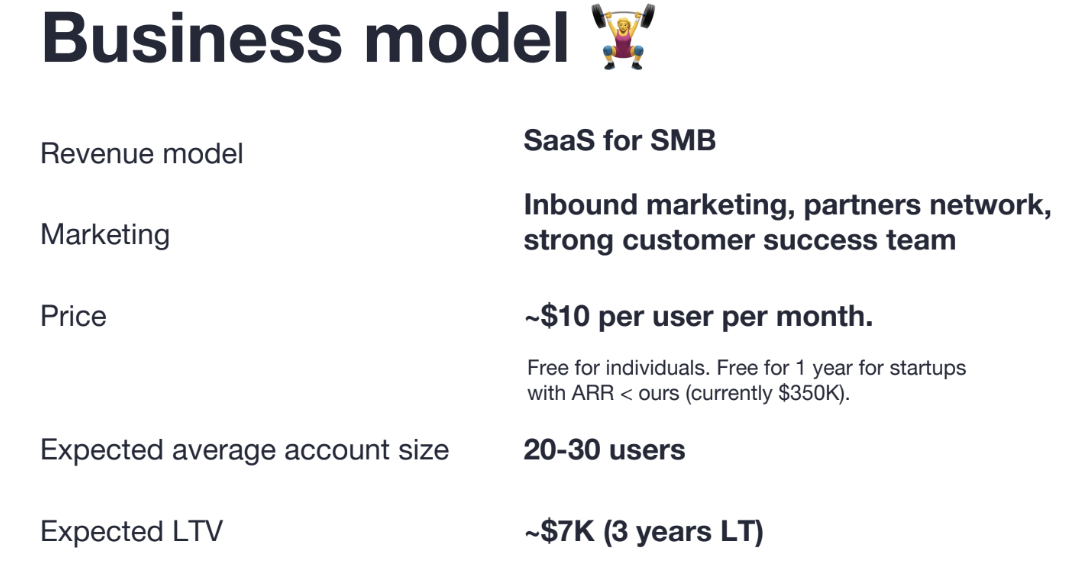
And if you’re already driving traffic to your website, consider including information on which marketing channels are performing best.
If you’re not using Google Analytics or a similar web analytics tool, use Semrush’s Traffic Analytics tool to quickly identify the top contributors to your website traffic.
Launch the tool and enter your domain. Then, click “Analyze.”
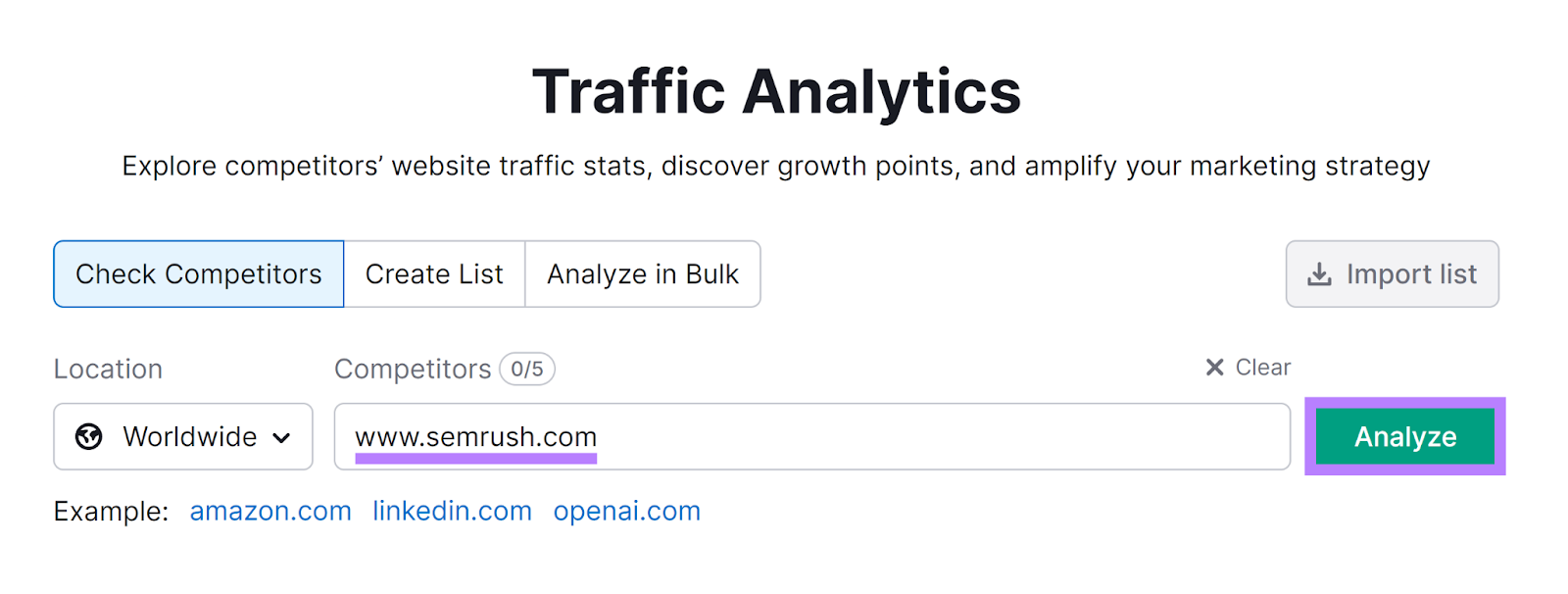
Scroll to the “Traffic Journey” section to see a visual representation of your top traffic sources.
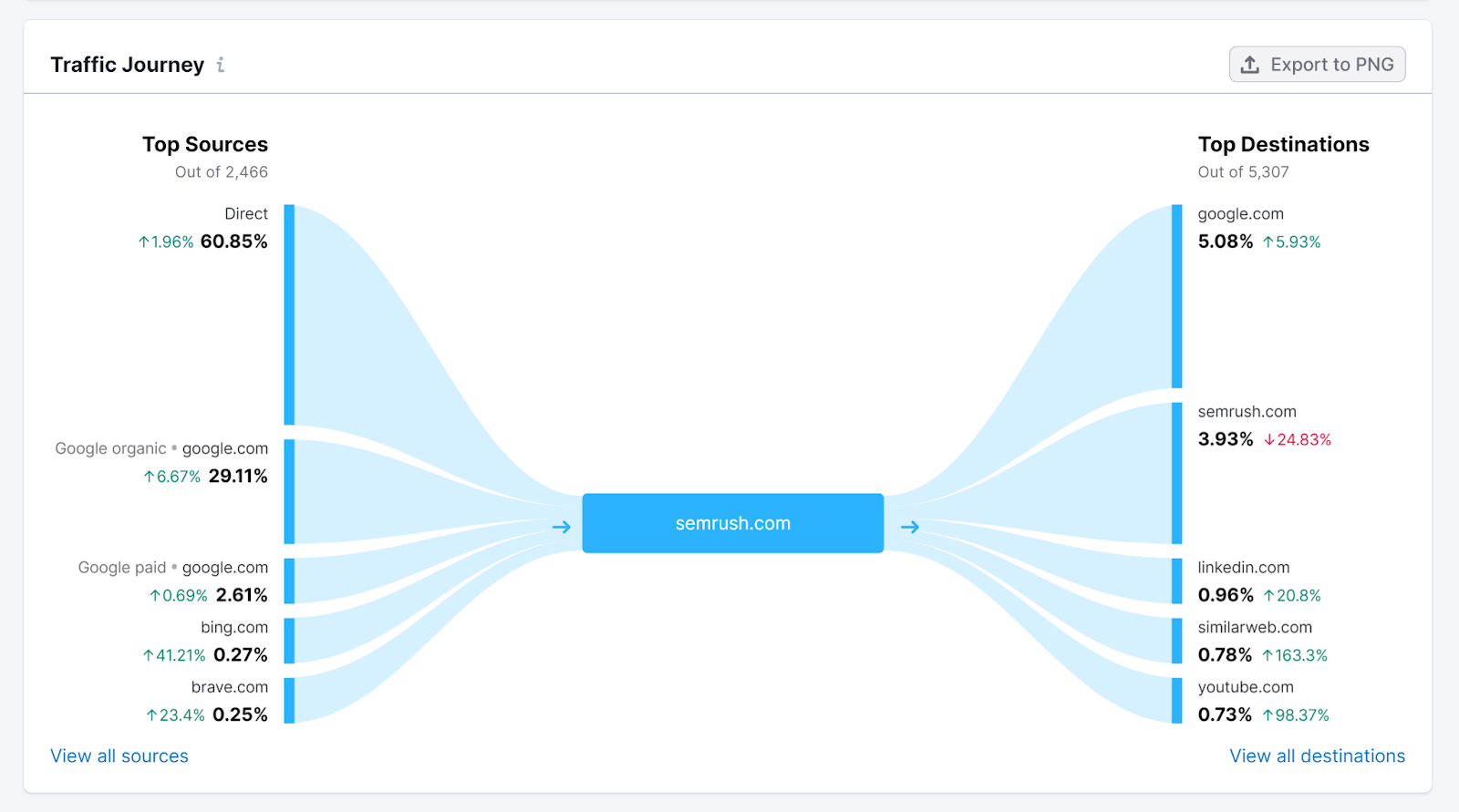
Use this information to make your pitch deck more persuasive.

8. Competitor Analysis
Use this slide to show investors who your main competitors are and how your business will beat the competition.
Use Semrush’s Organic Research tool to discover your top competitors.
Launch the tool, enter your domain, select your country, and click “Search.”
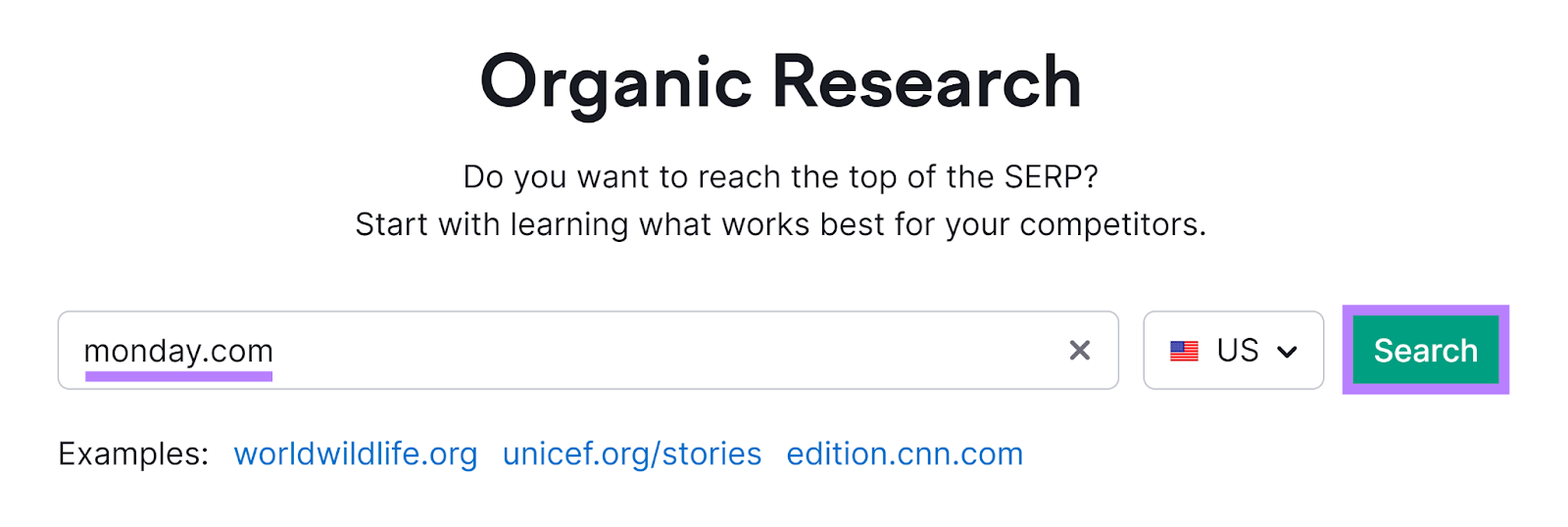
Click the “Competitors” tab and look at the “Competitive Positioning Map.”
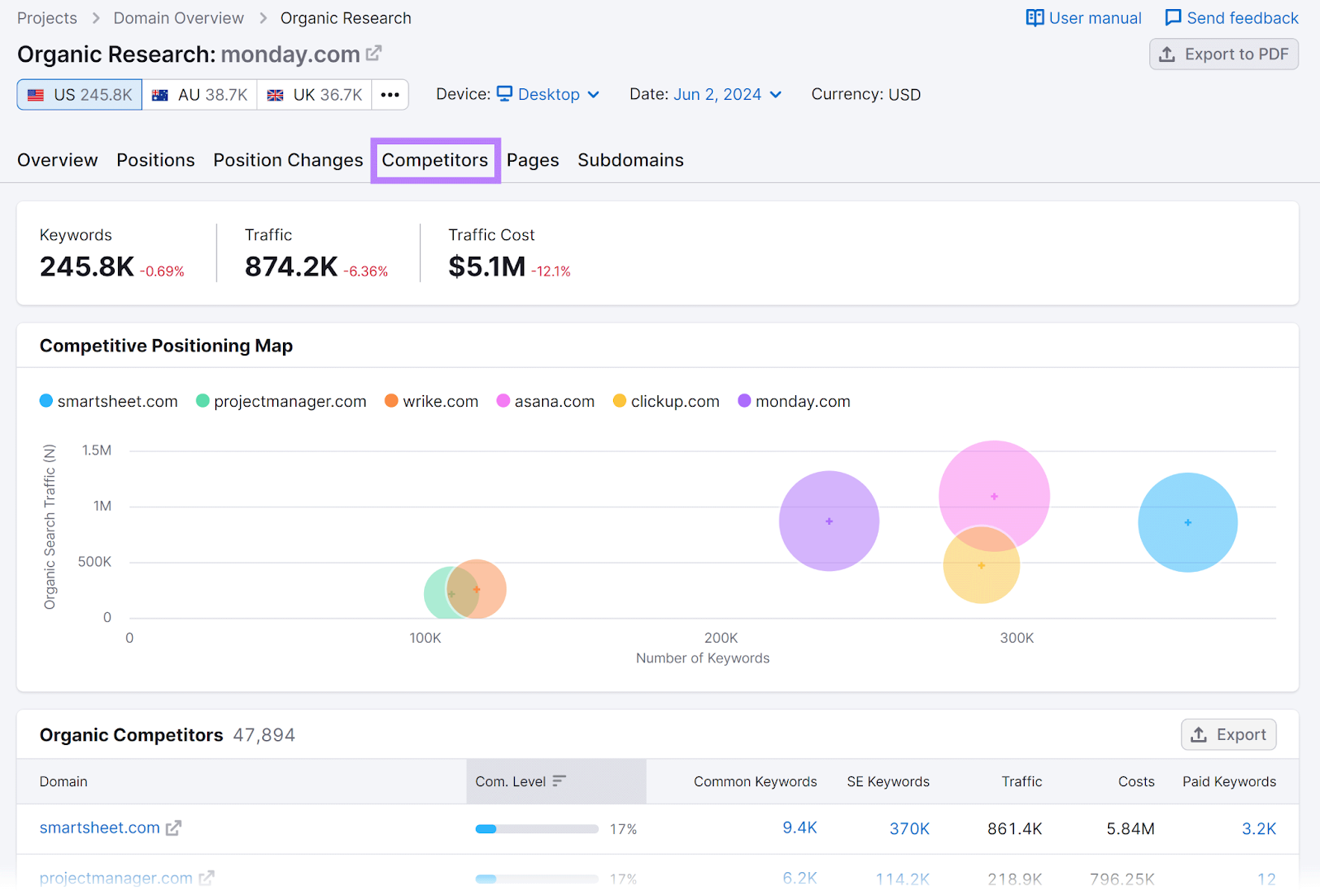
Here, you’ll see a visual representation of your top organic search competitors.
Scroll to “Organic Competitors” for a list of companies that compete in Google’s top 20 search results for relevant keywords.
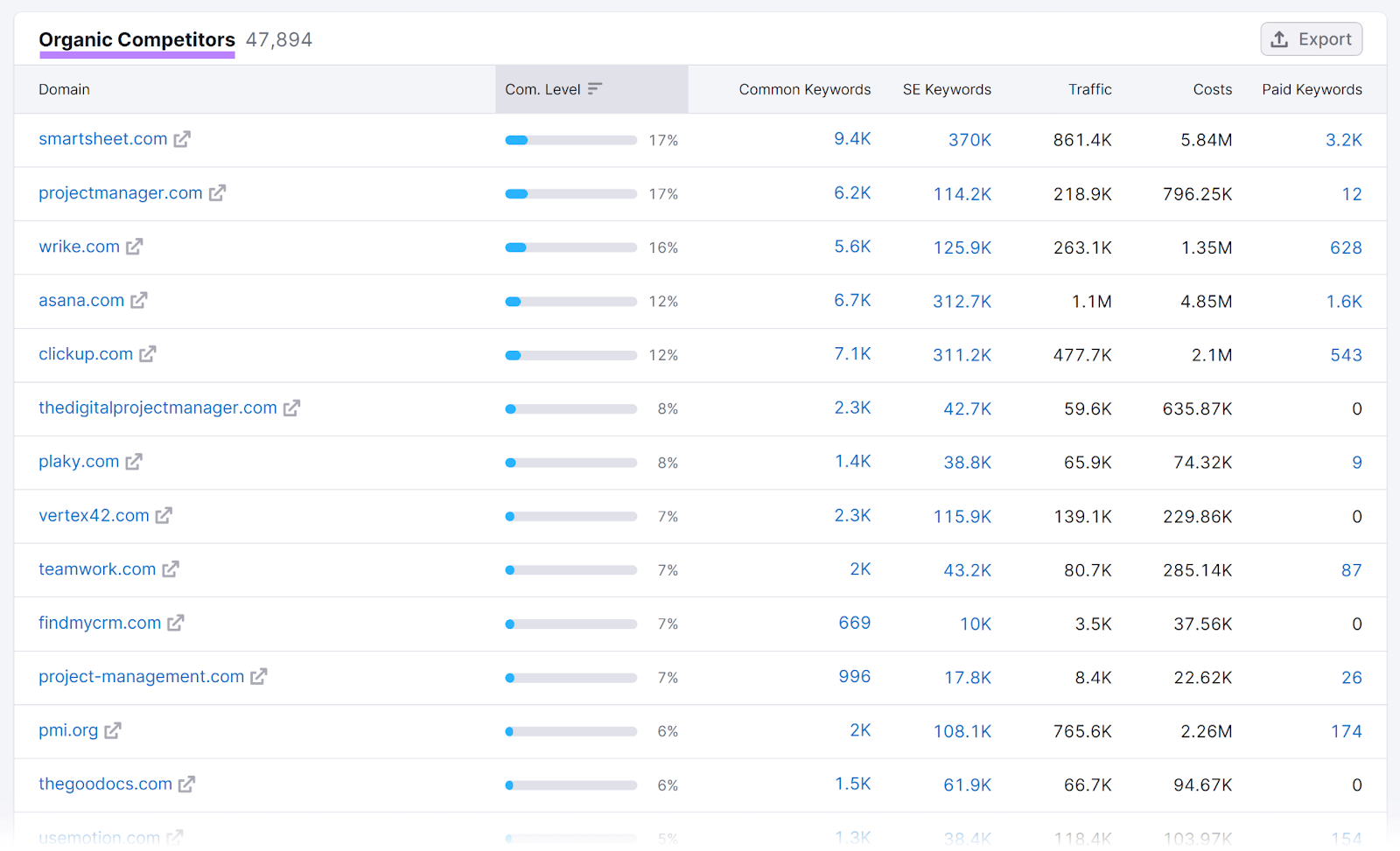
View each competitor’s estimated organic traffic to identify your biggest threats.
Now, research your competitors by visiting their websites and gathering more data. And do a strengths, weaknesses, opportunities, and threats analysis (SWOT analysis) for each one to gain a comprehensive understanding of their market positions:
- Strengths: Identify what each competitor does well. Like maintaining a positive brand reputation, creating proprietary technology, etc.
- Weaknesses: Recognize competitor shortcomings. Like negative feedback, lack of certain features, or high prices that aren't justified by additional value.
- Opportunities: Look for external factors you can use to improve your market position. Such as emerging market trends, changes in consumer behavior, or technological advancements.
- Threats: Determine what external factors could threaten your success. Like regulatory changes or economic downturns.
Now, use your competitor research to create a slide that shows what sets your product or service apart from others. And consider visually comparing your product against competitors.
Get Competitor Insights for Your Pitch Deck
with the Organic Research Tool

9. Traction
If your business has been operating for a while, provide a summary of your financial history. Including revenue and significant financial milestones.
And be transparent about any debt or liabilities.
Enterprise software company Fulfil.io clearly highlighted traction in its pitch deck. With a graph that shows revenue growth.
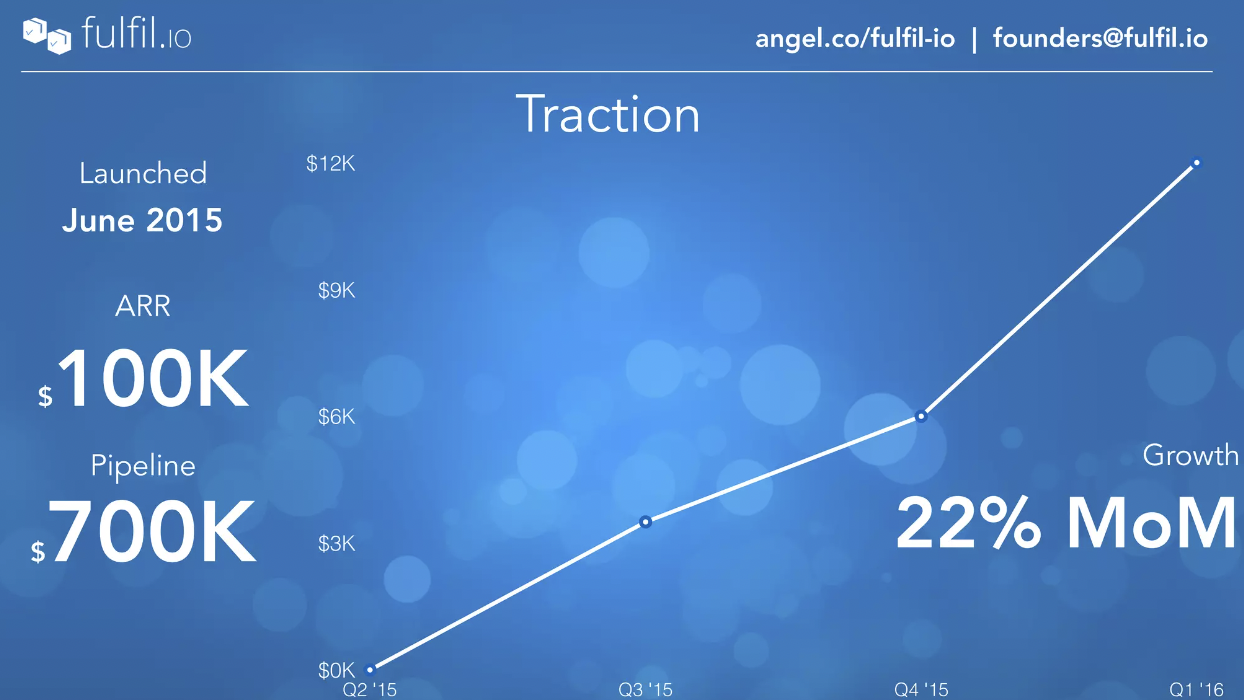
10. Team
Investors often say they invest in people—not just ideas. So, demonstrate your team’s strength, expertise, and credibility.
Include photos, names, roles, and key contributions.
This is something software company Hologram did well. The company highlighted top executives and their achievements in its pitch deck.
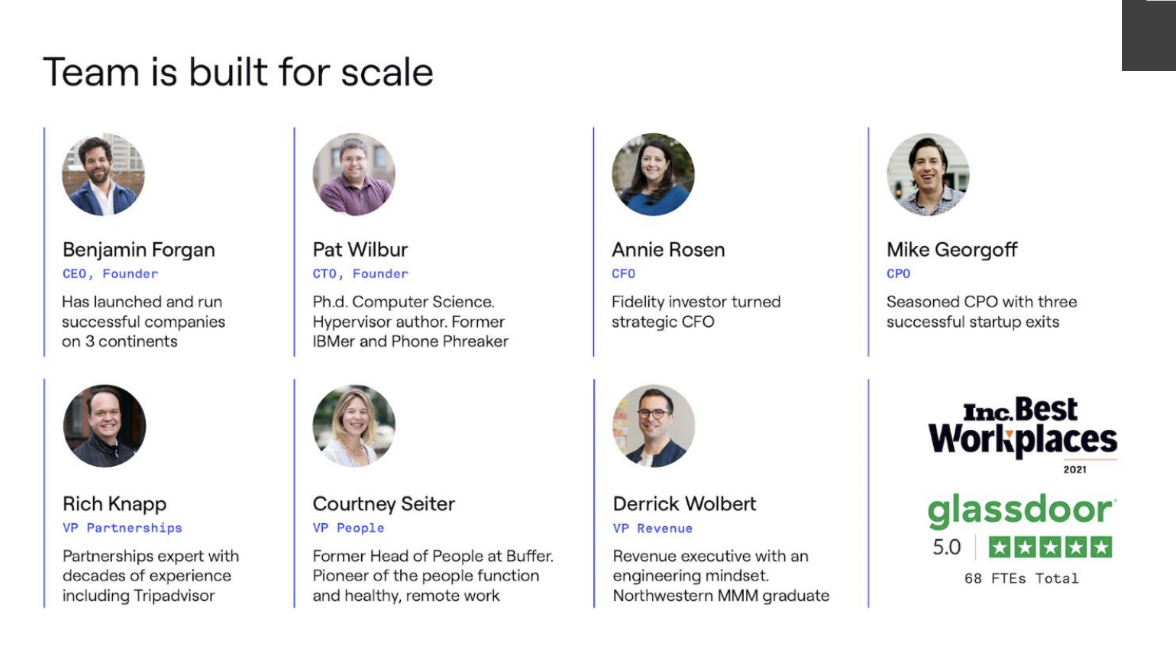
11. Financial Forecast
Outline your future financial projections (based on market growth research and other data) to show you you expect revenue to grow over the next several years. And help solidify that you have a solid plan.
For example, fintech app Relief highlighted its projected revenue with a graph.
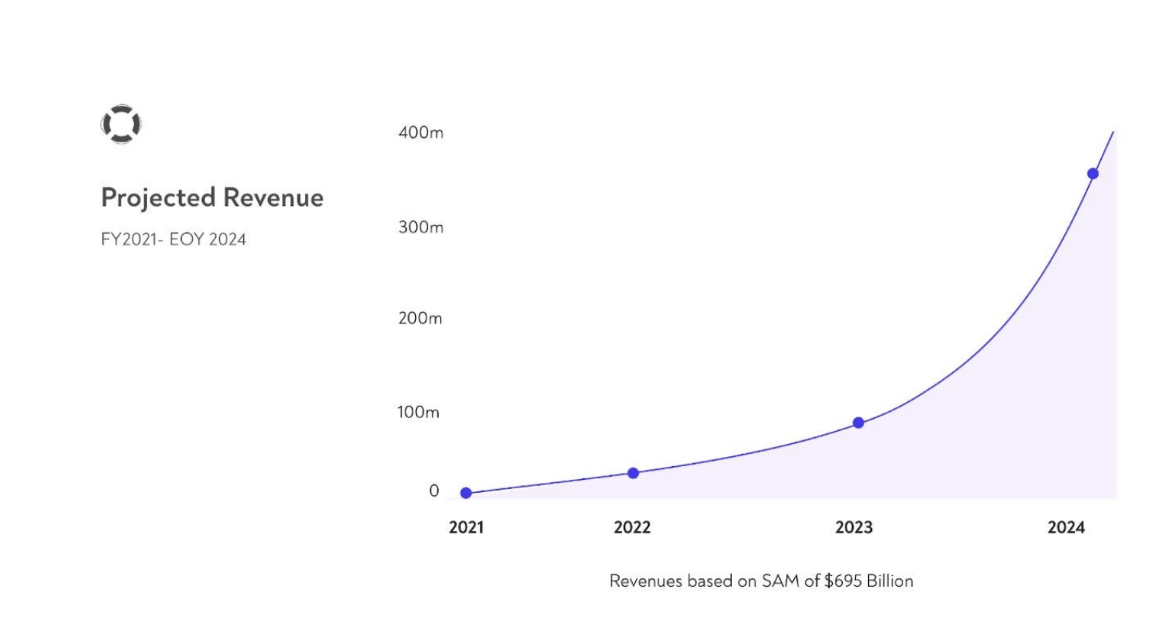
7 Inspiring Pitch Deck Examples
Airbnb
Airbnb has raised billions of dollars to date and is now a publicly traded company. So, let’s look at the pitch deck that started it all.
Airbnb’s pitch deck clearly highlighted the problems it solves:
- High travel costs
- Lack of authentic experiences for travelers
- Lack of options to book a home with locals or become hosts
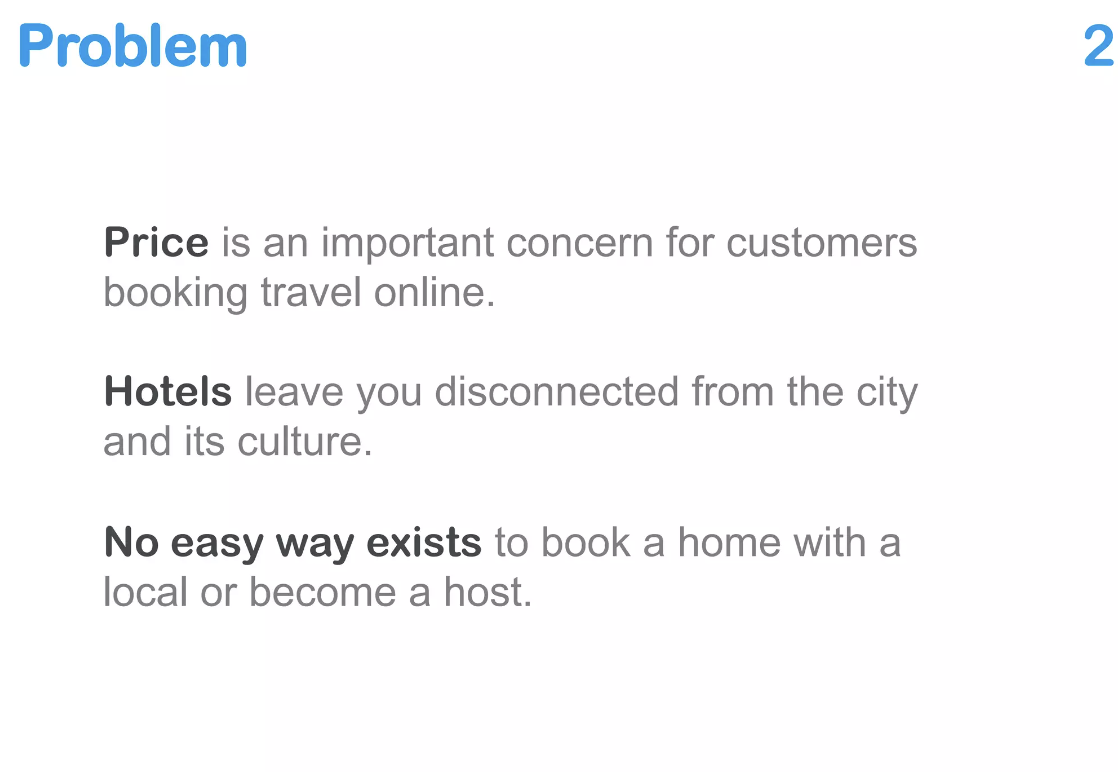
The deck also included solid research about the market size and potential growth.
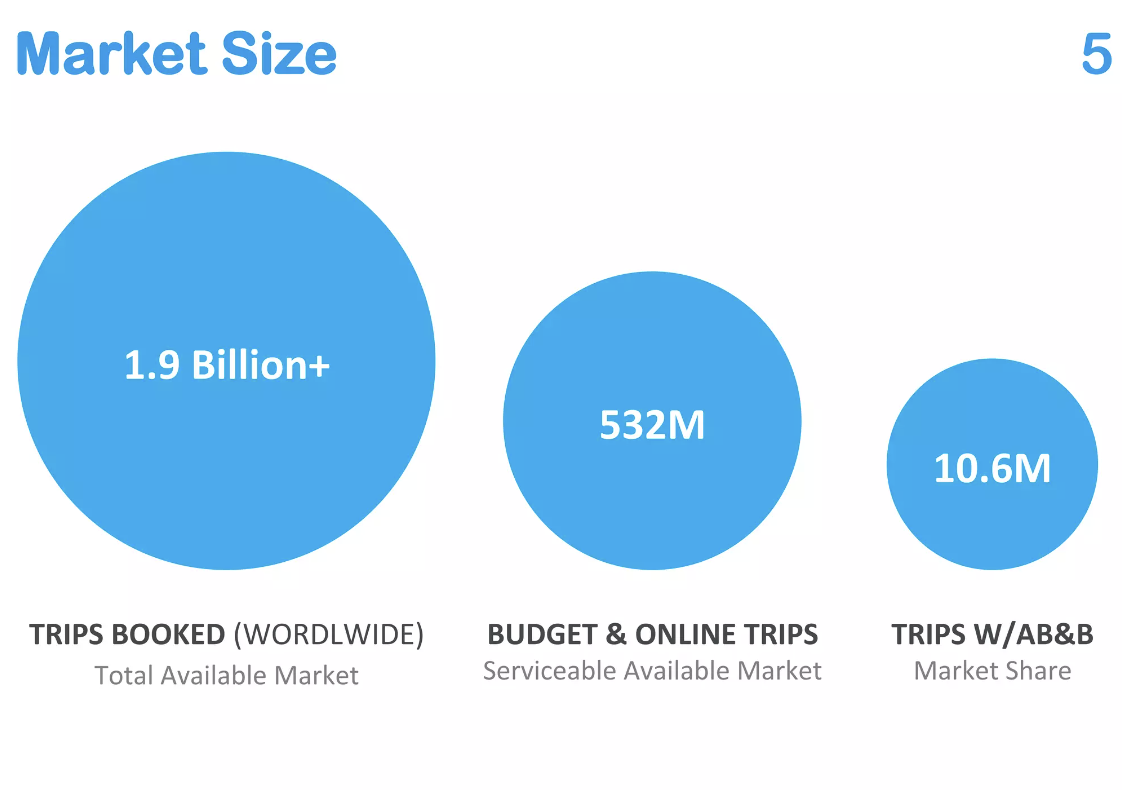
By quantifying the market size and potential, Airbnb demonstrated significant growth opportunities.
Airbnb also included interface screenshots. Which showed the product in action and highlighted how easy it is to use.
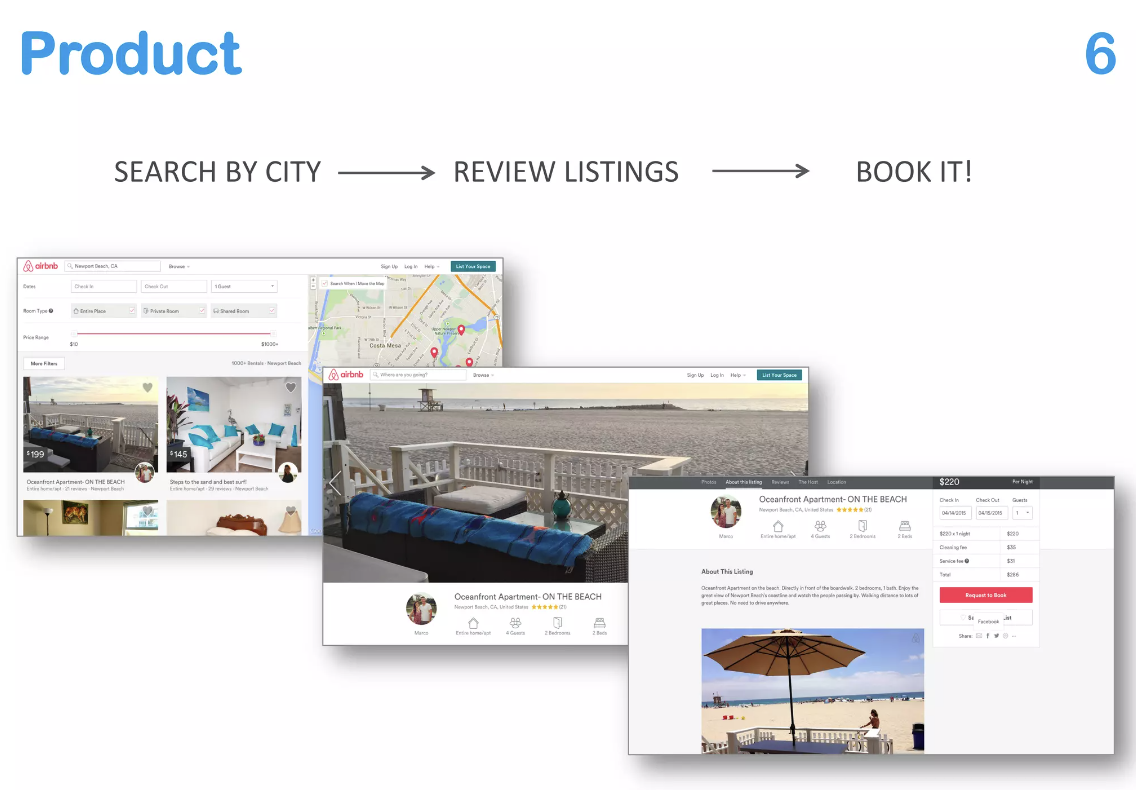
And the deck clearly explained how Airbnb makes money. Focusing on its commission-based revenue model. This clarity helped investors understand the path to profitability.
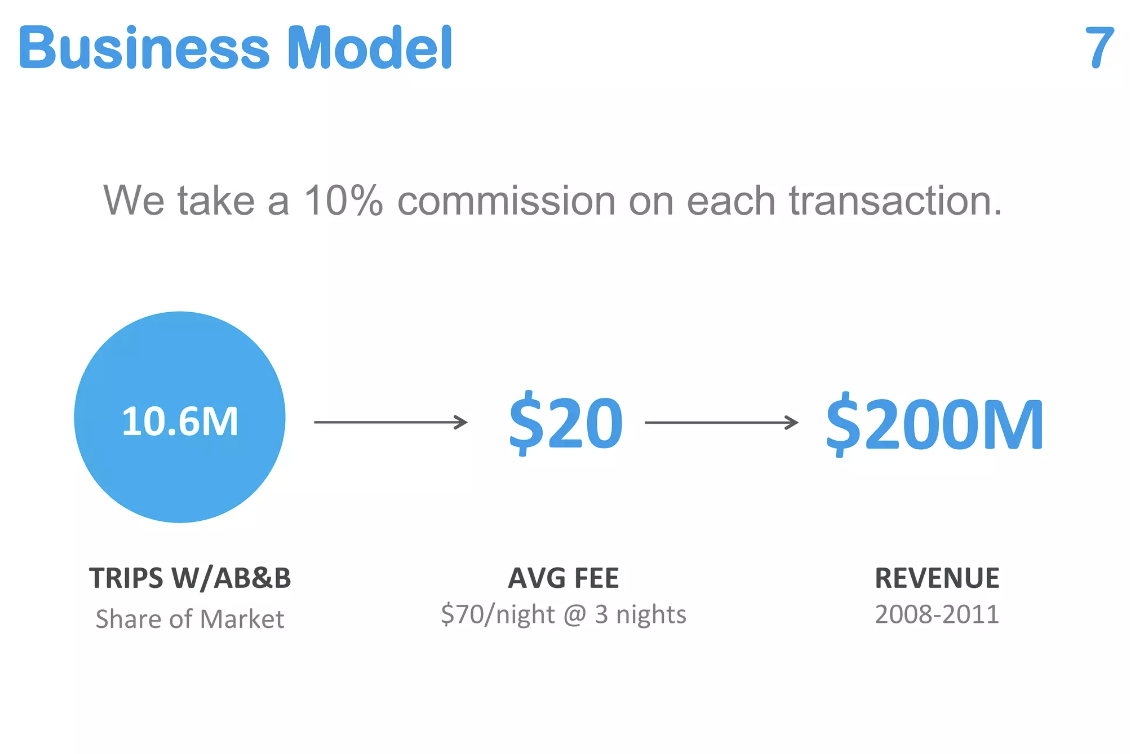
Softr
Softr is a no-code platform for building web apps using existing business data—and the company has raised a total of $15.7 million from investors. The pitch deck that helped secure some of those funds made an impact for a number of reasons.
First, it clearly explained what Softr does in just a few words.

The team used an analogy (“As simple as building Lego”) to emphasize the simplicity of its web app development process.
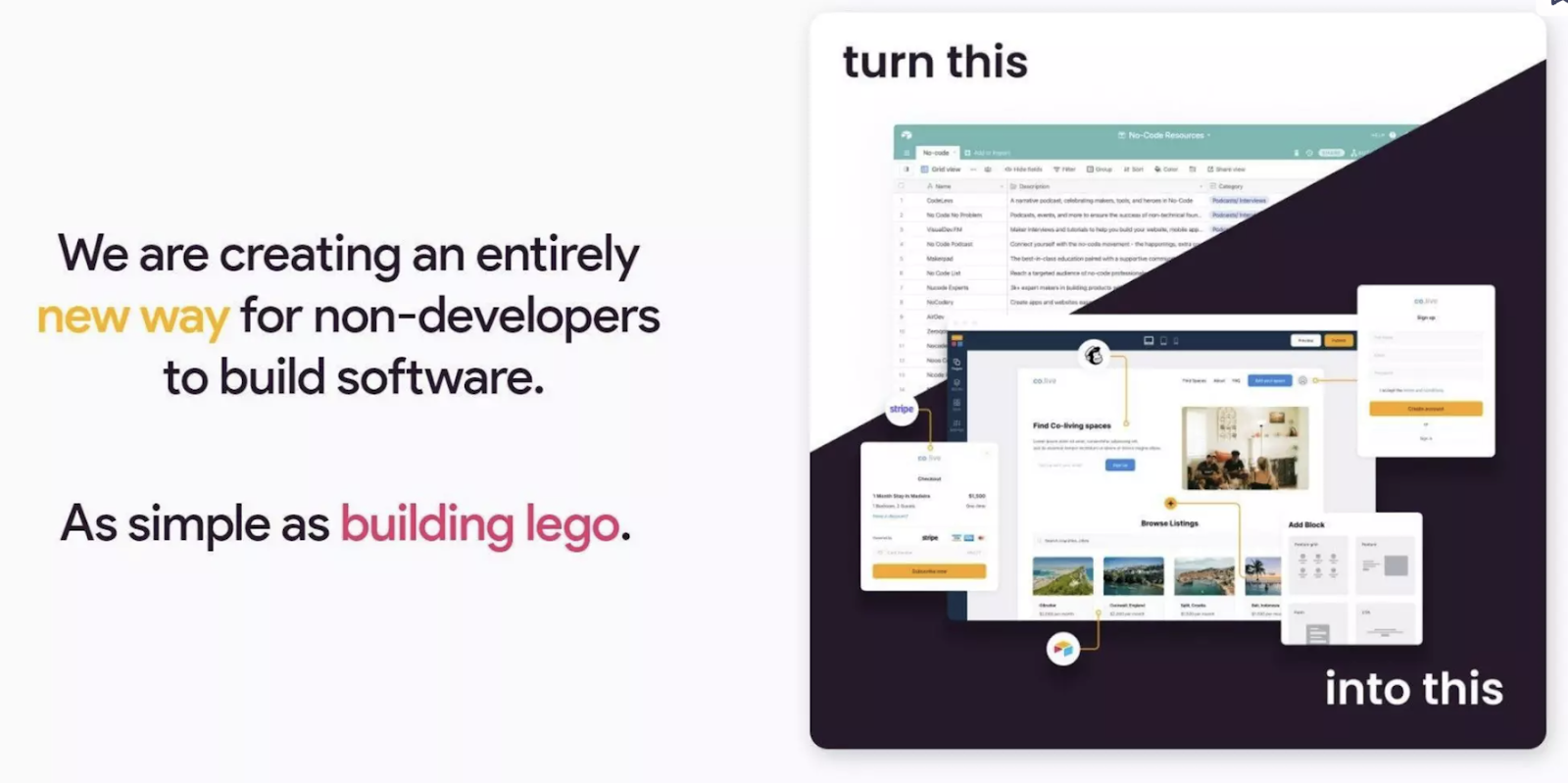
The presentation also outlined a scalable business model that could serve various industries and use cases. This called attention to the platform's flexibility and ability to address a wide range of customer needs.
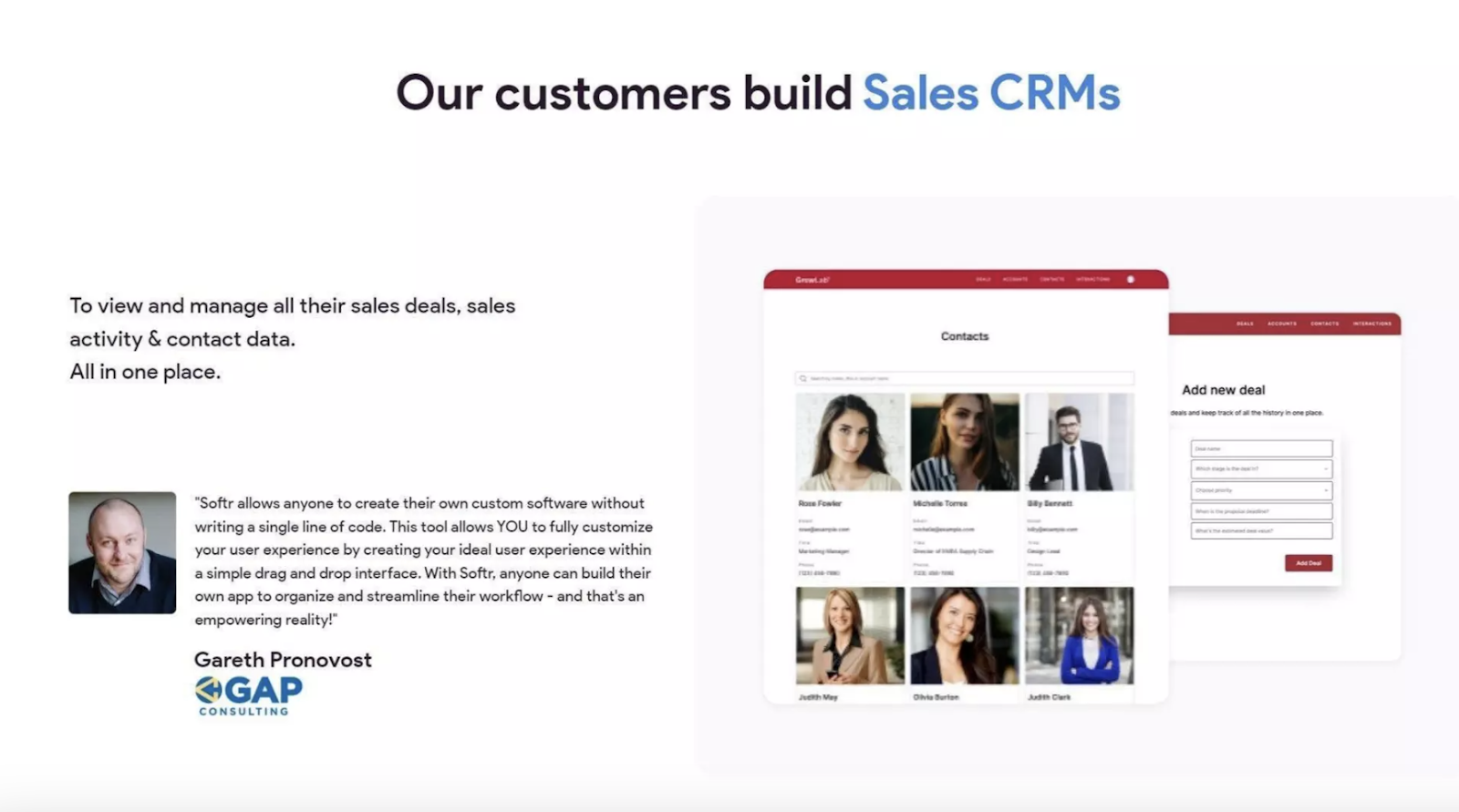
Softr also included a concise video demonstration in its pitch deck. To provide a more detailed look at the platform in action.
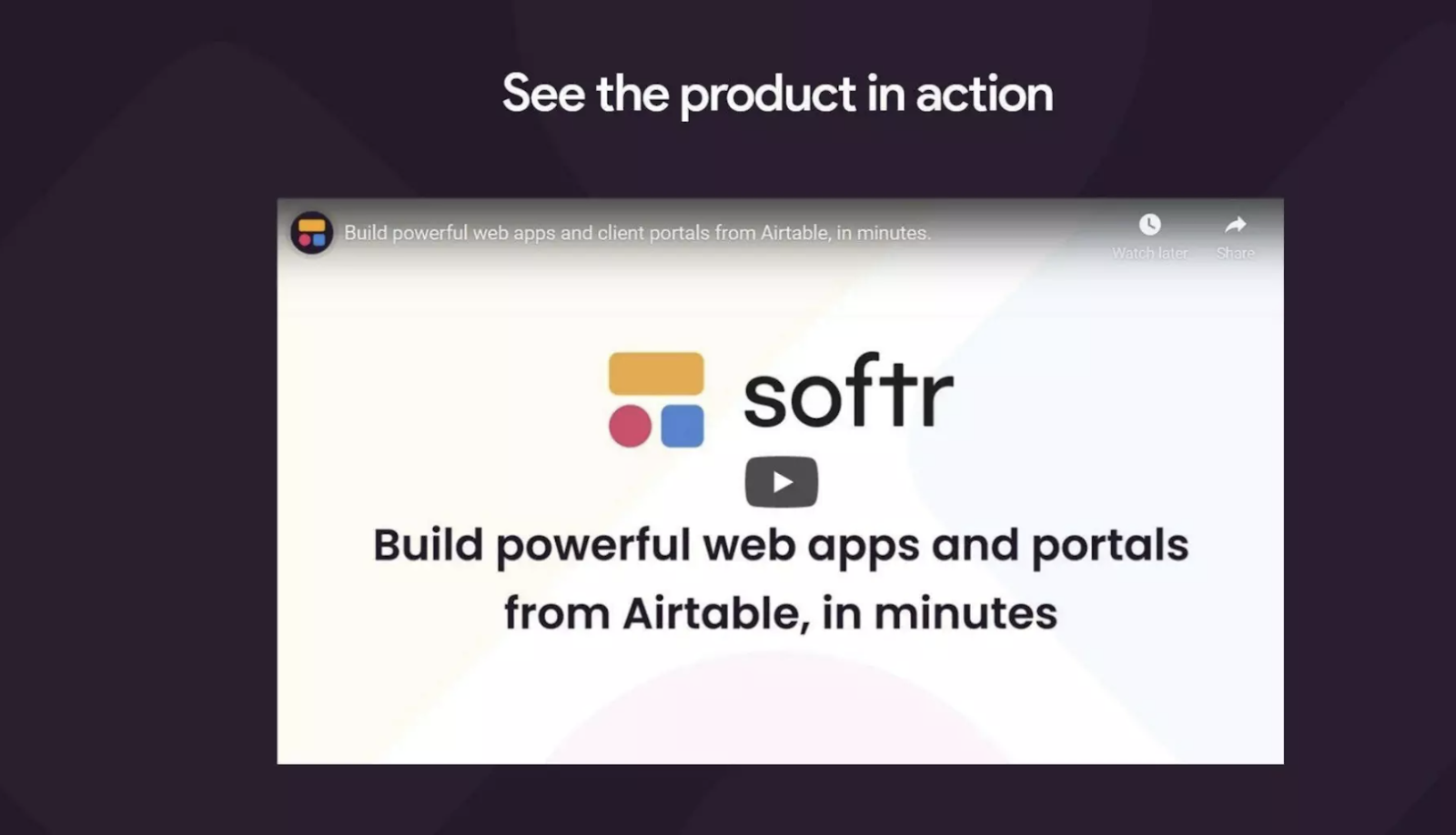
Uber
Uber's pitch deck introduced its service as a modern solution to traditional taxi companies. And the issues its ideal customers faced at the time.
The pitch deck opened by pointing out the inefficiency and unreliability of traditional taxi services.

The deck then positioned Uber as a revolutionary solution: an on-demand ride-hailing service that connects riders with drivers through a mobile app. Which addressed the issues it first pointed out.

Next, it explained how Uber was different from traditional taxi services (the convenience of on-demand rides, the use of GPS for accuracy, vetted drivers, and faster response times) using bullet points.
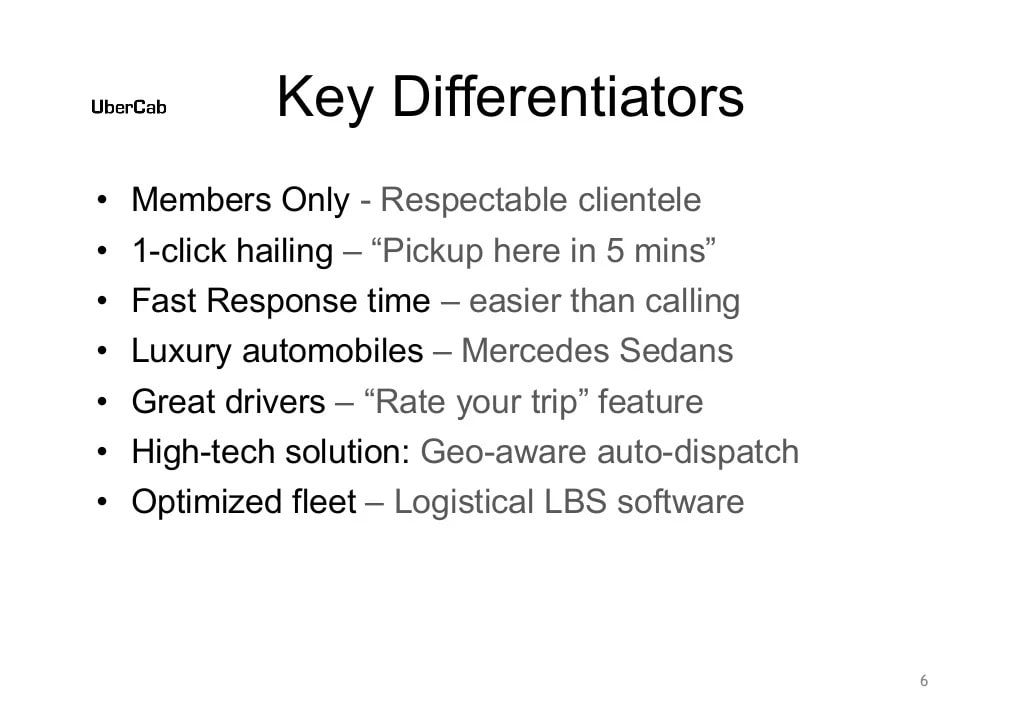
The deck also highlighted the large and untapped market for urban transportation. By quantifying the market size and growth potential, Uber demonstrated significant opportunities for market penetration and expansion.
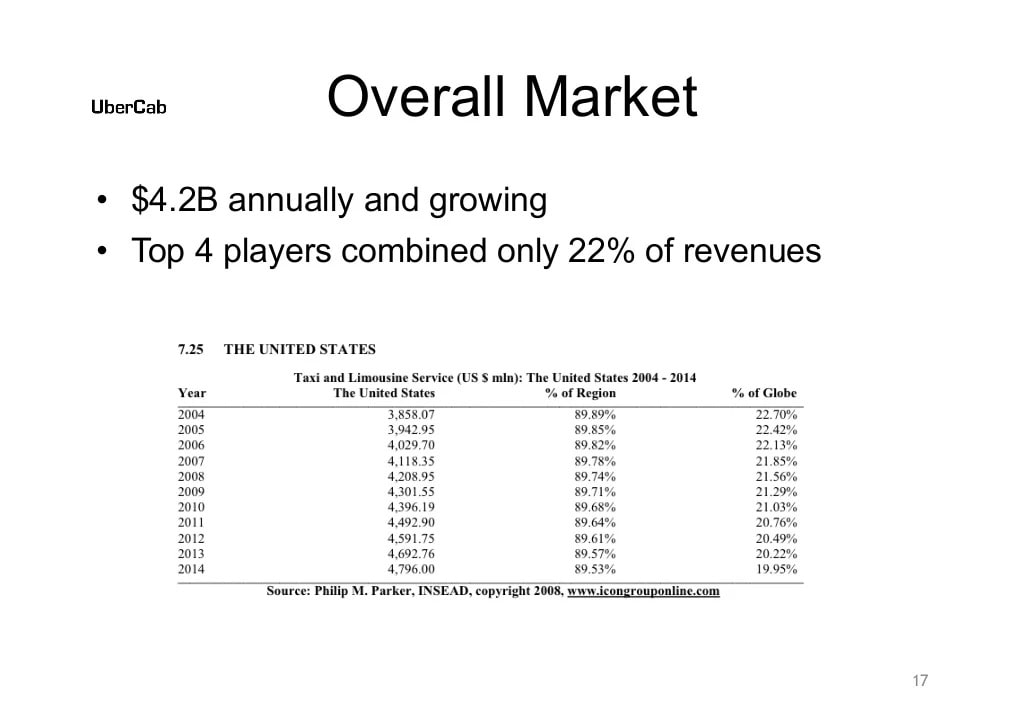
Snapchat
Snapchat’s pitch deck wasn’t really meant for investors. It was made to show businesses the value of using Snapchat for marketing to persuade brands to create business accounts.
The deck featured Snapchat’s logo on a bright yellow background. And the phrase "For Business'' clearly identified the target audience.
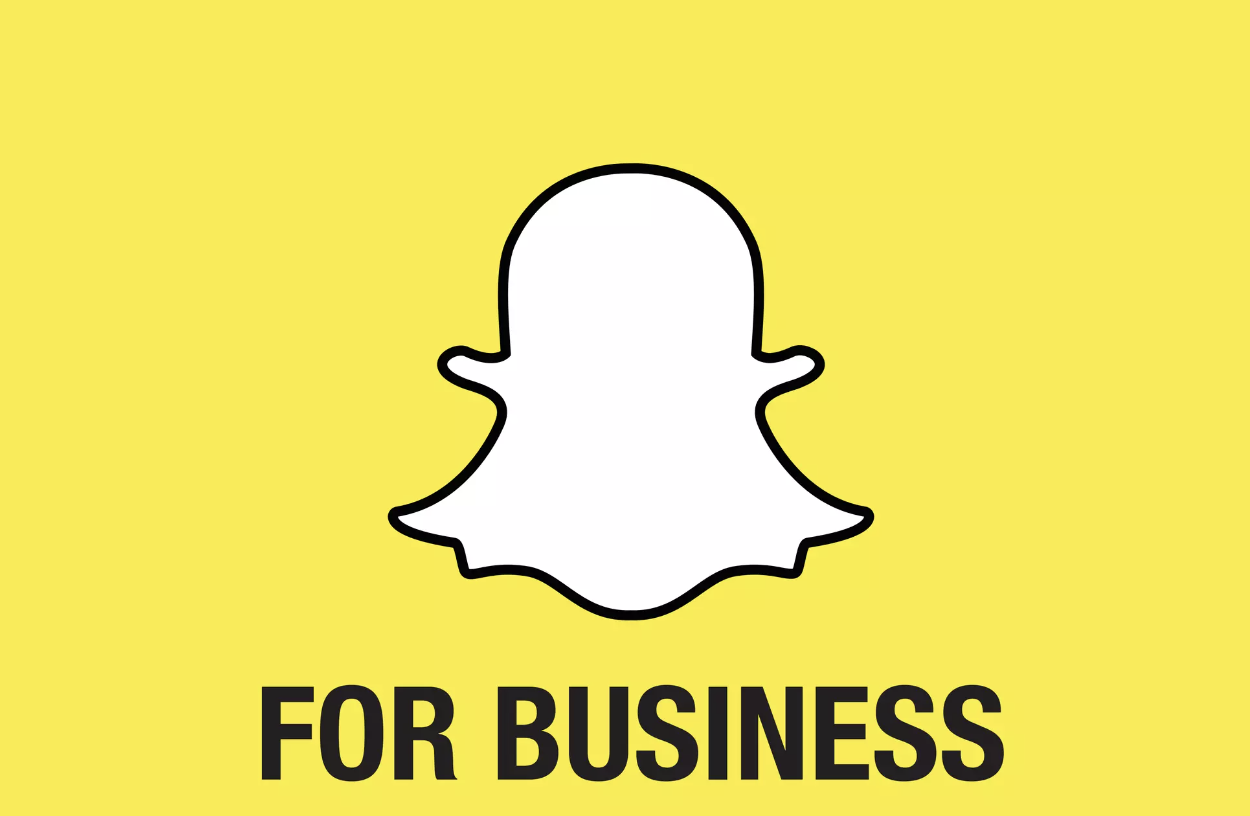
The deck included screenshots of Snapchat’s intuitive design, giving businesses a look at the app’s interface and how audiences use it.
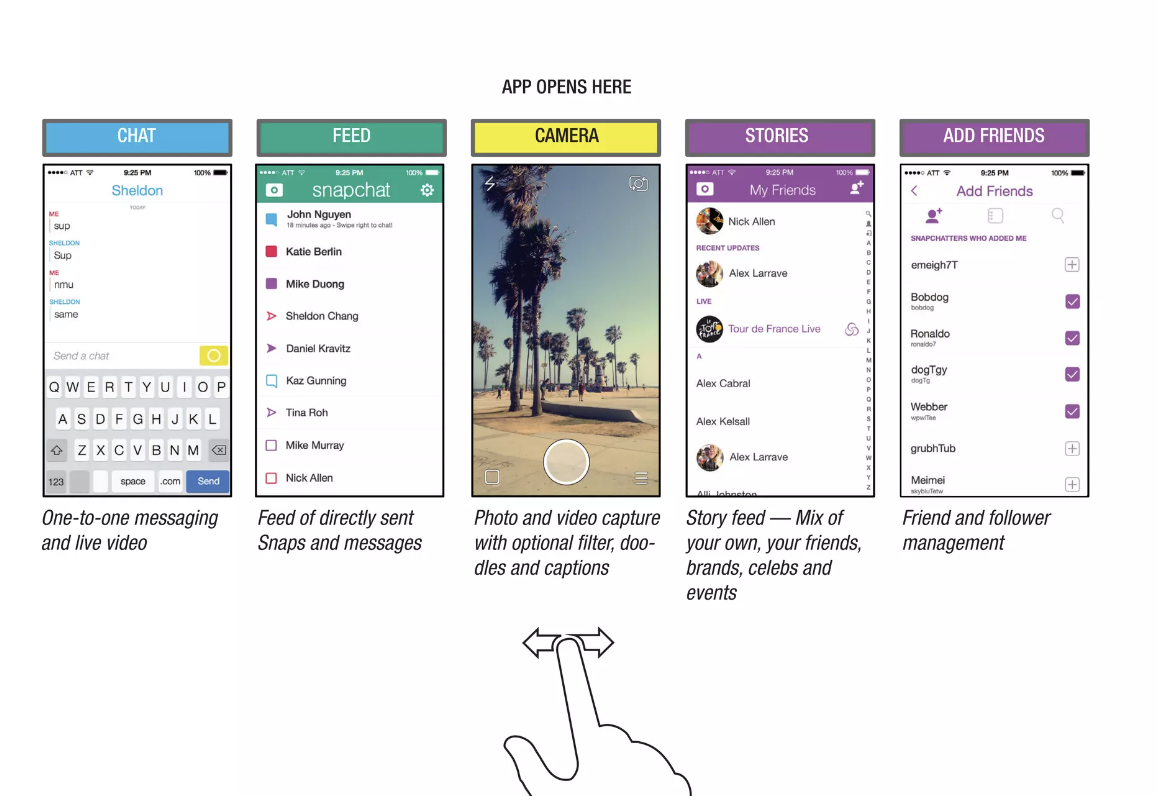
Snapchat also showed how major brands like Grubhub were using its app to connect with customers.To provide tangible proof of the platform's effectiveness for marketing.

But Snapchat's standout feature—disappearing messages—was the overarching theme of ithe deck. Because it showed businesses how the app differed from others in the market.

Further reading: A Guide to the Best Advertising Platforms for Your Business
Front
Customer service platform Front created a pitch deck with a problem-solving narrative, strong visuals, and transparent financials. Which made it stand out.
The deck featured symbols, charts, and graphs to highlight key information in an easy-to-understand manner.
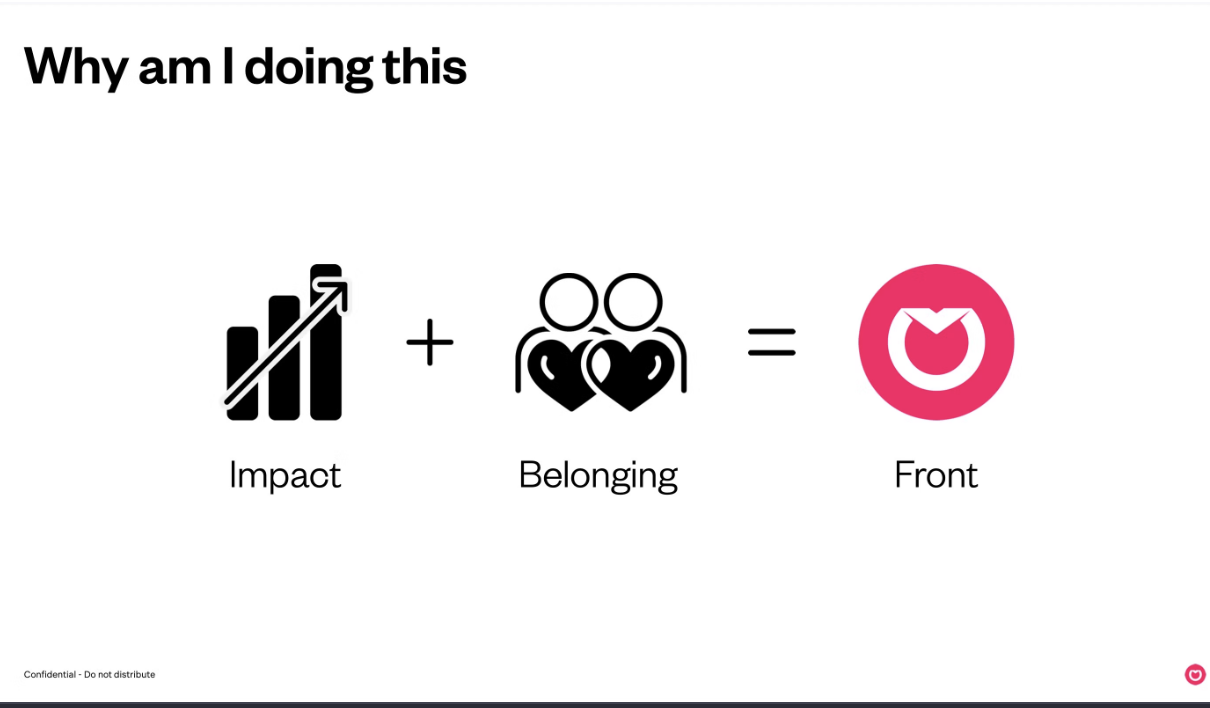
Front highlighted the various problems its product solves. Including the issue of email overload that prevents employees from focusing on productive work.
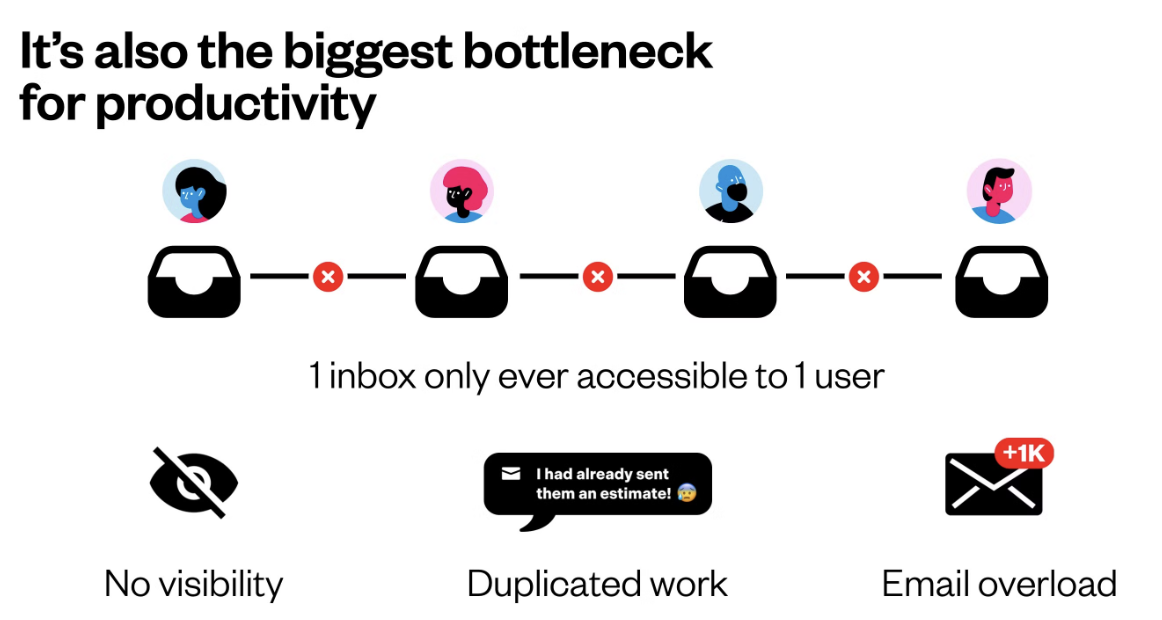
And Front strategically positioned its product as an email collaboration tool with benefits like enhanced information access, efficiency, and focus.
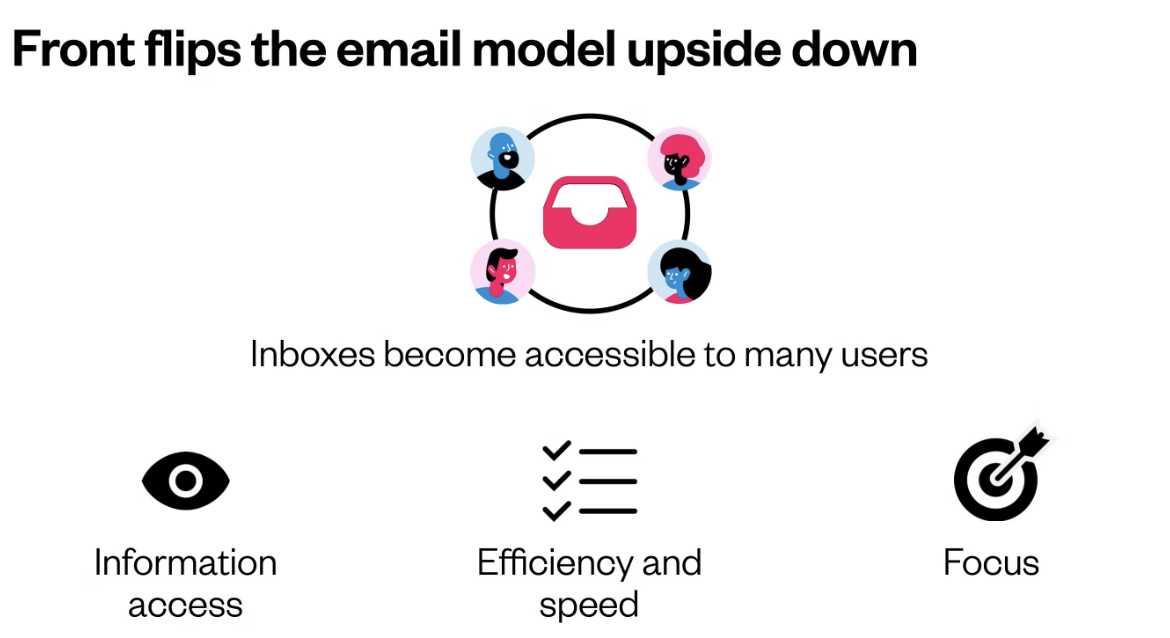
Detailed financial projections and transparent historical data helped investors understand Front’s financial viability and potential return on their investment.
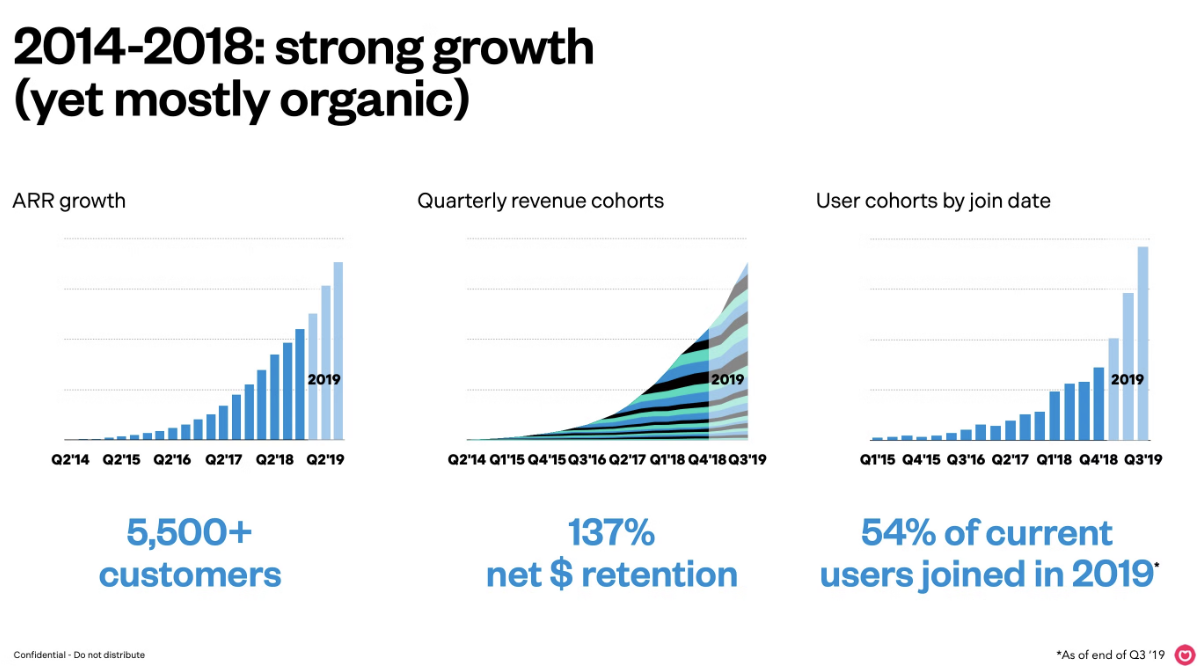
Prolific
Online research platform Prolific secured £25 million in its Series A funding round in 2023. And it’s reasonable to assume the company’s pitch deck played a role.
Prolific highlighted the problem of recruiting high-quality research participants by addressing major pain points in the recruitment process. And these pain points were specific, making it easy for investors to understand the impact of the problem.

Prolific then offered a unique solution to these challenges: providing researchers with highly trusted participants through its platform.
It emphasized its unique ability to connect vetted participants with researchers.
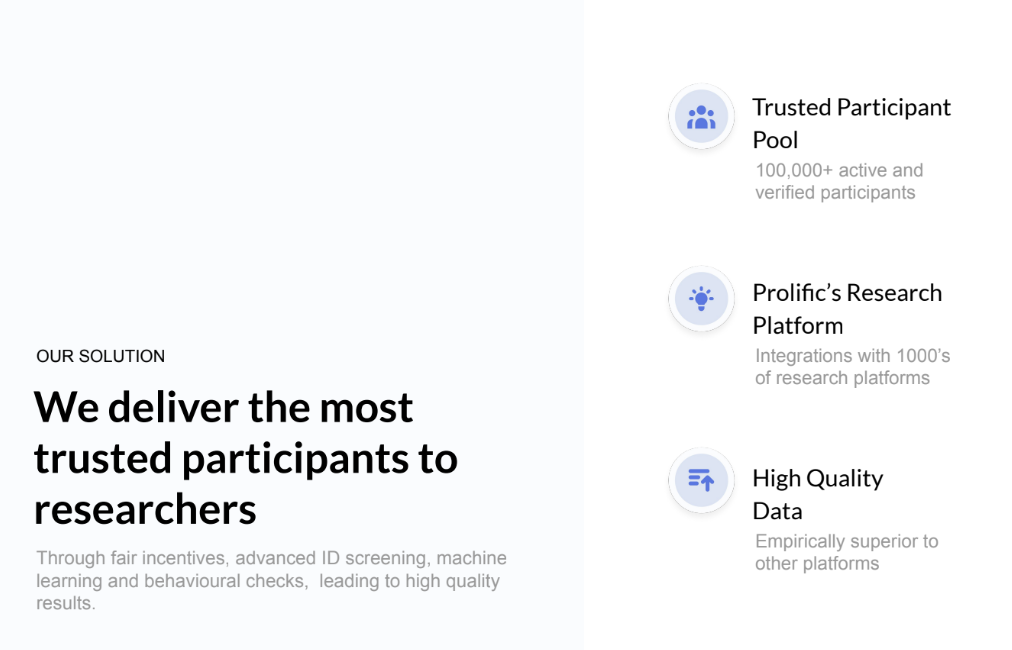
Prolific used bullet points to clearly explain what sets its platform apart. Like 100,000 active users and integration with thousands of research platforms.
The deck then highlighted Prolific’s growth curve with the help of a graph. And featured core team members.
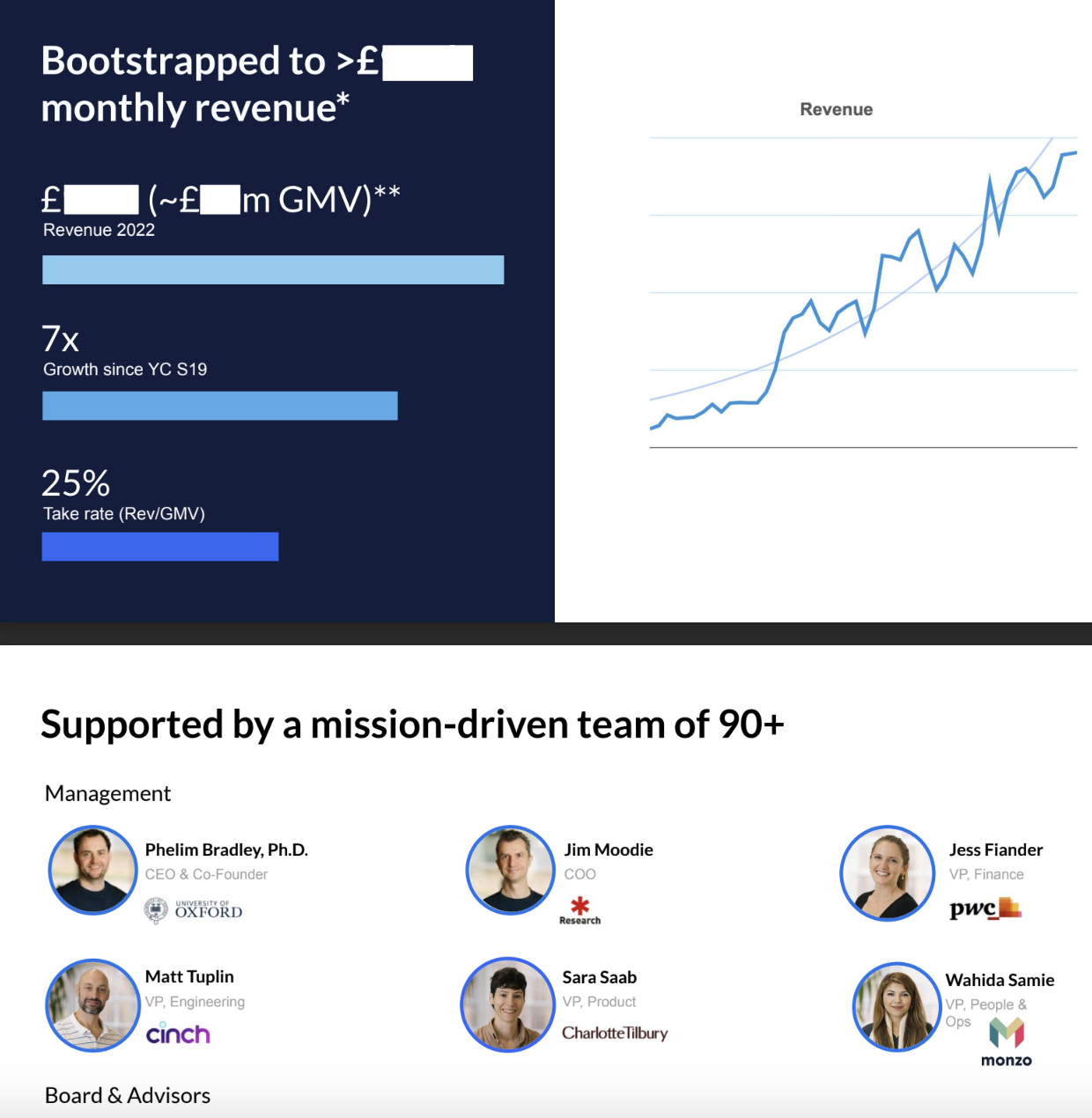
The deck also included a table that compared Prolific to its competitors to demonstrate why Prolific was the superior choice.
Supernormal
AI-powered notetaker Supernormal raised $10 million in its seed round. Thanks in part to an effective pitch deck that captured attention with a bold statement: "Never take notes again."
It then explained what Supernormal does in one sentence: “Supernormal automatically takes meeting notes for Google Meet.”
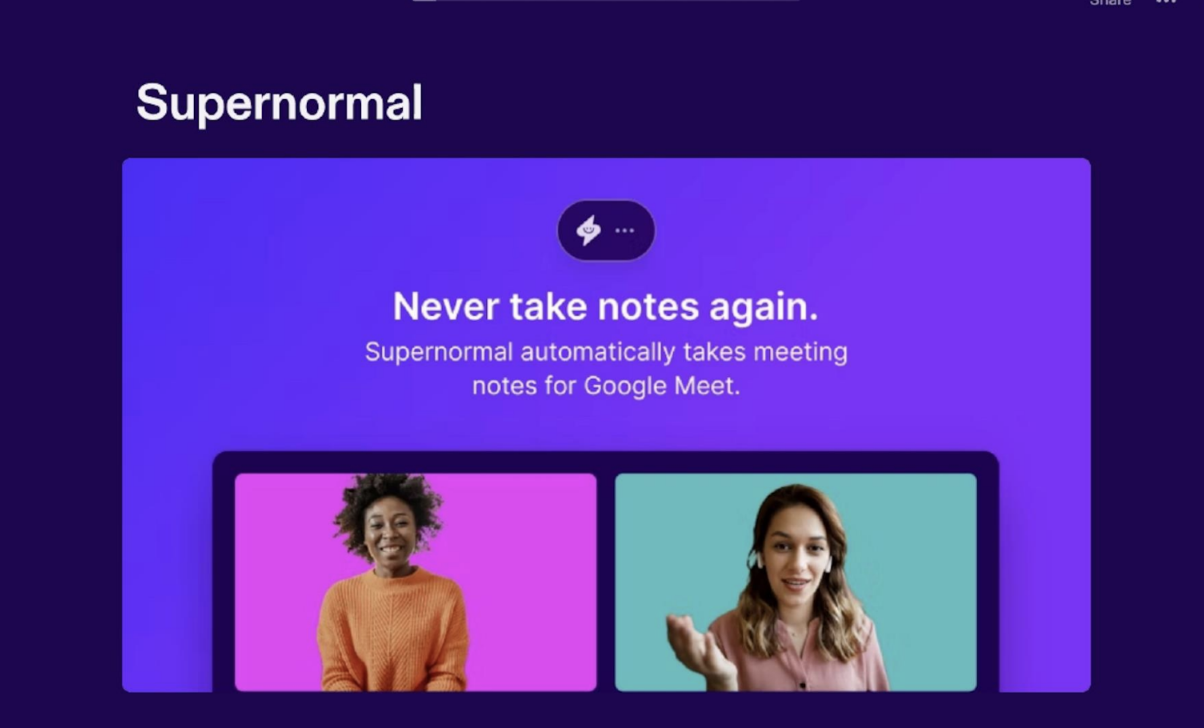
The deck then moved on to introduce the brains behind Supernormal. To show the expertise and innovation driving the product.

To further add credibility, Supernormal listed the top companies that use its platform. Like Netflix, Clover, Wayfair, and Salesforce. To help instill confidence that Supernormal’s product was worth investing in.
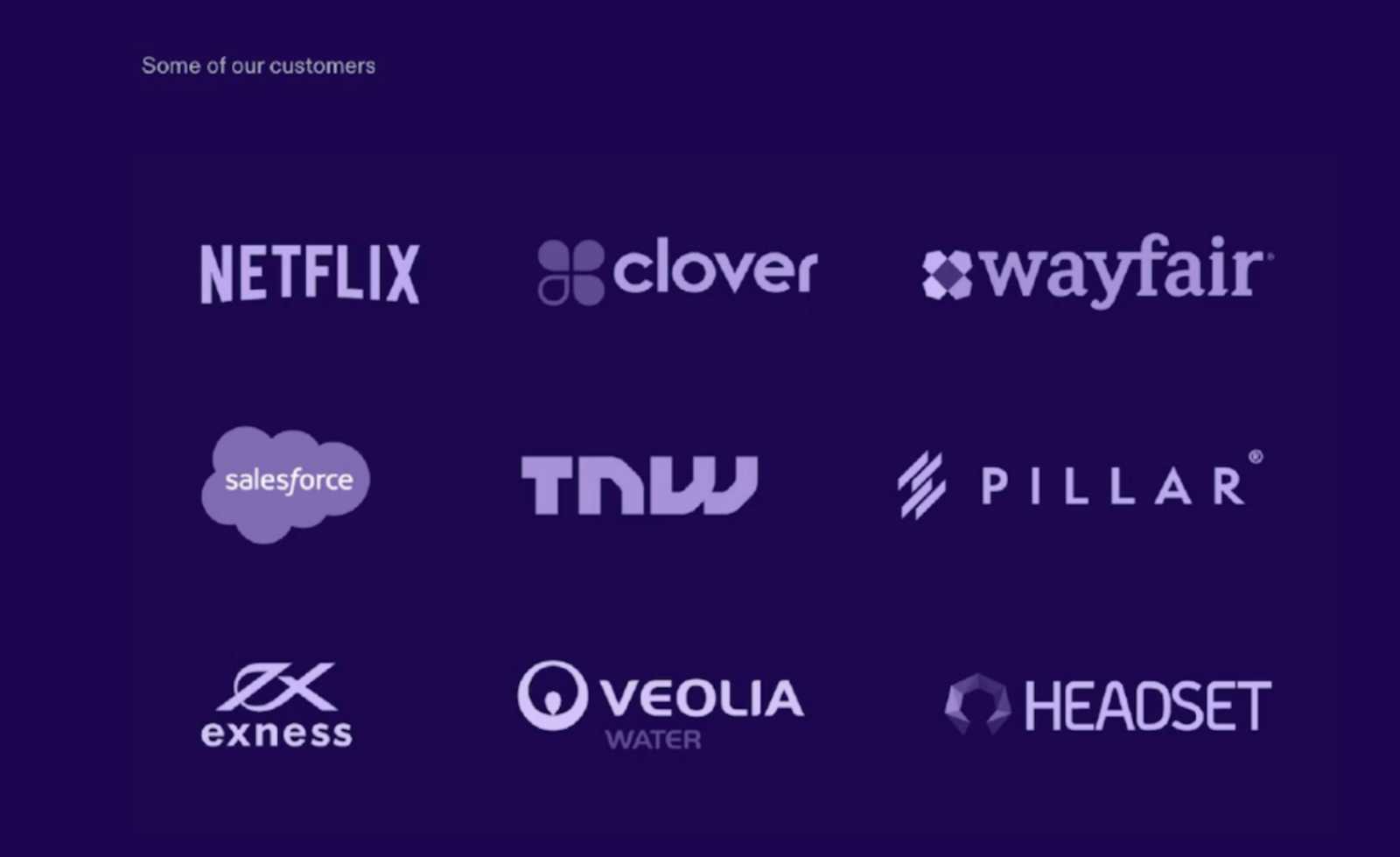
Create a Winning Pitch Deck
A great pitch deck is visually interesting and concisely displays crucial information that’s backed by data. Including market and competitor research.
Gathering that information is easier than you might think.
Use tools like Market Explorer to research new markets and Traffic Analytics to dig up specific data points. Get access to both with a Semrush .Trends subscription.


